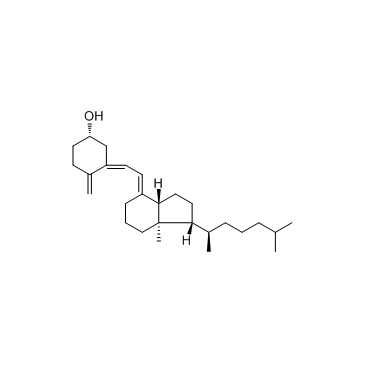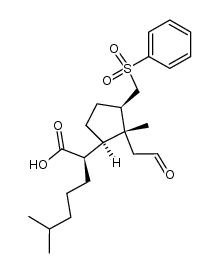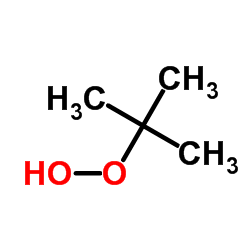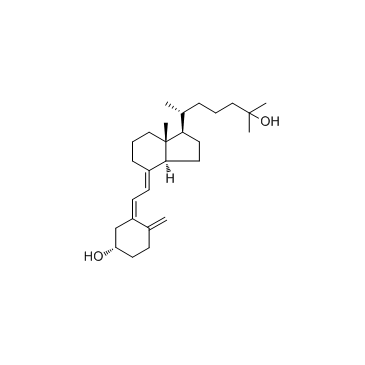67-97-0
| Name | calciol |
|---|---|
| Synonyms |
Oxarol
Vitamin D3 Ebivit Cholecalciferolum (3S,5Z,7E)-9,10-Secocholesta-5,7,10-trien-3-ol (1S,3Z)-3-[(2E)-2-{(1R,3aS,7aR)-1-[(1R)-1,5-Dimethylhexyl]-7a-methyloctahydro-4H-inden-4-yliden}ethyliden]-4-methylidencyclohexanol Cyclohexanol, 3-[(2E)-2-[(1R,3aS,7aR)-1-[(1R)-1,5-dimethylhexyl]octahydro-7a-methyl-4H-inden-4-ylidene]ethylidene]-4-methylene-, (1S,3Z)- Micro-Dee (5Z,7E)-(3S)-9,10-secocholesta-5,7,10(19)-trien-3-ol Deparal FeraCol MFCD00078131 9,10-secocholesta-5,7,10-trien-3-ol, (3S,5Z,7E)- Prezios cholecalciferol (1S,3Z)-3-[(2E)-2-[(1R,3aS,7aR)-1-[(1R)-1,5-dimethylhexyl]octahydro-7a-methyl-4H-inden-4-ylidene]ethylidene]-4-methylenecyclohexanol UNII-1C6V77QF41 Vi-De3 MC 1275 Granuvit D3 Devaron (3b,5Z,7E)-9,10-Secocholesta-5,7,10(19)-trien-3-ol cyclohexanol, 3-[(2E)-2-[(1R,3aS,7aR)-1-(1,5-dimethylhexyl)octahydro-7a-methyl-4H-inden-4-ylidene]ethylidene]-4-methylene-, (1S,3Z)- rampage vitamin D3 powder D3-Vicotrat NEO Dohyfral D3 (1S,3Z)-3-[(2E)-2-{(1R,3aS,7aR)-1-[(1R)-1,5-dimethylhexyl]-7a-methyloctahydro-4H-inden-4-ylidene}ethylidene]-4-methylidenecyclohexanol Vigantol EINECS 200-673-2 9,10-Secocholesta-5,7,10(19)-trien-3-ol, (3β,5Z,7E)- (1S,3Z)-4-Methylene-3-[(2E)-2-{(1R,3aS,7aR)-7a-methyl-1-[(2R)-6-methyl-2-heptanyl]octahydro-4H-inden-4-ylidene}ethylidene]cyclohexanol colecalciferol Videkhol (3β,Z,7E)-9,10-Secocholesta-5,7,10(19)-trien-3-ol [3H]-Vitamin D3 9,10-Secocholesta-5,7,10(19)-trien-3b-ol calciol Provitina VITAMIN D |
| Description | Cholecalciferol(Vitamin D3) is a naturally occuring form of vitamin D; Reported that upon metabolic activation, Cholecalciferol induces cell differentiation and prevents proliferation of cancer cells. IC50 value:Target: Vitamin D acts through a receptor that is a member of the ligand-dependent transcription factor superfamily. Modulates the proliferation and differentiation of both normal and cancer cells. Has antiproliferative and antimetastatic effects on breast, colon, and prostate cancer cells. Activated vitamin D receptors in intestine and bone maintain calcium absorbance and homeostasis. |
|---|---|
| Related Catalog | |
| Target |
Human Endogenous Metabolite |
| References |
| Density | 1.0±0.1 g/cm3 |
|---|---|
| Boiling Point | 496.4±24.0 °C at 760 mmHg |
| Melting Point | 83-86 °C(lit.) |
| Molecular Formula | C27H44O |
| Molecular Weight | 384.638 |
| Flash Point | 214.2±15.1 °C |
| Exact Mass | 384.339203 |
| PSA | 20.23000 |
| LogP | 9.72 |
| Vapour Pressure | 0.0±2.9 mmHg at 25°C |
| Index of Refraction | 1.523 |
| Storage condition | 2~8°C |
Synonym:Cholecalciferol; 9,10-Secocholesta-5,7,10(19)-trien-33-o Section 2 - COMPOSITION, INFORMATION ON INGREDIENTS
Risk Phrases: 25 Section 3 - HAZARDS IDENTIFICATION EMERGENCY OVERVIEW
Toxic if swallowed.Light sensitive. Potential Health Effects Eye: May cause eye irritation. Skin: May cause skin irritation. Ingestion: May be fatal if swallowed. May cause irritation of the digestive tract. May cause kidney damage. May cause cardiac disturbances. Ingestion may lead to mental retardation. Inhalation: May cause respiratory tract irritation. Chronic: Chronic ingestion may cause effects similar to those of acute ingestion. Section 4 - FIRST AID MEASURES Eyes: Immediately flush eyes with plenty of water for at least 15 minutes, occasionally lifting the upper and lower eyelids. Get medical aid. Skin: Get medical aid if irritation develops or persists. Flush skin with plenty of soap and water. Ingestion: If victim is conscious and alert, give 2-4 cupfuls of milk or water. Never give anything by mouth to an unconscious person. Get medical aid. Inhalation: Remove from exposure and move to fresh air immediately. Get medical aid if cough or other symptoms appear. Notes to Physician: Section 5 - FIRE FIGHTING MEASURES General Information: As in any fire, wear a self-contained breathing apparatus in pressure-demand, MSHA/NIOSH (approved or equivalent), and full protective gear. Extinguishing Media: In case of fire, use water, dry chemical, chemical foam, or alcohol-resistant foam. Section 6 - ACCIDENTAL RELEASE MEASURES General Information: Use proper personal protective equipment as indicated in Section 8. Spills/Leaks: Sweep up or absorb material, then place into a suitable clean, dry, closed container for disposal. Avoid generating dusty conditions. Section 7 - HANDLING and STORAGE Handling: Wash thoroughly after handling. Use with adequate ventilation. Minimize dust generation and accumulation. Avoid contact with eyes, skin, and clothing. Keep container tightly closed. Do not ingest or inhale. Storage: Store in a cool, dry, well-ventilated area away from incompatible substances. Store protected from light and air. Section 8 - EXPOSURE CONTROLS, PERSONAL PROTECTION Engineering Controls: Use adequate general or local exhaust ventilation to keep airborne concentrations below the permissible exposure limits. Exposure Limits CAS# 67-97-0: Personal Protective Equipment Eyes: Wear appropriate protective eyeglasses or chemical safety goggles as described by OSHA's eye and face protection regulations in 29 CFR 1910.133 or European Standard EN166. Skin: Wear appropriate protective gloves to prevent skin exposure. Clothing: Wear appropriate protective clothing to prevent skin exposure. Respirators: Follow the OSHA respirator regulations found in 29 CFR 1910.134 or European Standard EN 149. Use a NIOSH/MSHA or European Standard EN 149 approved respirator if exposure limits are exceeded or if irritation or other symptoms are experienced. Section 9 - PHYSICAL AND CHEMICAL PROPERTIES Physical State: Solid Color: white Odor: none reported pH: Not available. Vapor Pressure: Not available. Viscosity: Not available. Boiling Point: Not available. Freezing/Melting Point: 84-85C Autoignition Temperature: Not available. Flash Point: Not available. Explosion Limits, lower: Not available. Explosion Limits, upper: Not available. Decomposition Temperature: Solubility in water: Insoluble. Specific Gravity/Density: Molecular Formula: C27H44O Molecular Weight: 384.64 Section 10 - STABILITY AND REACTIVITY Chemical Stability: Stable under normal temperatures and pressures. Conditions to Avoid: Incompatible materials, light, dust generation, exposure to air. Incompatibilities with Other Materials: Strong oxidizing agents - acid chlorides - acid anhydrides. Hazardous Decomposition Products: Carbon monoxide, carbon dioxide. Hazardous Polymerization: Has not been reported. Section 11 - TOXICOLOGICAL INFORMATION RTECS#: CAS# 67-97-0: VS2900000 LD50/LC50: CAS# 67-97-0: Oral, mouse: LD50 = 42500 ug/kg; Oral, rat: LD50 = 42 mg/kg. Carcinogenicity: Vitamin D3 - Not listed by ACGIH, IARC, or NTP. Other: See actual entry in RTECS for complete information. Section 12 - ECOLOGICAL INFORMATION Section 13 - DISPOSAL CONSIDERATIONS Dispose of in a manner consistent with federal, state, and local regulations. Section 14 - TRANSPORT INFORMATION IATA Shipping Name: TOXIC SOLID, ORGANIC, N.O.S.* Hazard Class: 6.1 UN Number: 2811 Packing Group: II IMO Shipping Name: TOXIC SOLID, ORGANIC, N.O.S. Hazard Class: 6.1 UN Number: 2811 Packing Group: II RID/ADR Shipping Name: TOXIC SOLID, ORGANIC, N.O.S. Hazard Class: 6.1 UN Number: 2811 Packing group: II Section 15 - REGULATORY INFORMATION European/International Regulations European Labeling in Accordance with EC Directives Hazard Symbols: T Risk Phrases: R 25 Toxic if swallowed. Safety Phrases: S 24/25 Avoid contact with skin and eyes. WGK (Water Danger/Protection) CAS# 67-97-0: 1 Canada CAS# 67-97-0 is listed on Canada's DSL List. CAS# 67-97-0 is not listed on Canada's Ingredient Disclosure List. US FEDERAL TSCA CAS# 67-97-0 is listed on the TSCA inventory. SECTION 16 - ADDITIONAL INFORMATION N/A |
CHEMICAL IDENTIFICATION
HEALTH HAZARD DATAACUTE TOXICITY DATA
|
| Symbol |


GHS06, GHS08 |
|---|---|
| Signal Word | Danger |
| Hazard Statements | H301 + H311-H330-H372 |
| Precautionary Statements | P260-P280-P284-P301 + P310-P310 |
| Personal Protective Equipment | Eyeshields;Faceshields;Gloves;type P2 (EN 143) respirator cartridges |
| Hazard Codes | T+:Verytoxic; |
| Risk Phrases | R24/25;R26;R48/25 |
| Safety Phrases | S28-S36/37-S45-S28A |
| RIDADR | UN 2811 6.1/PG 2 |
| WGK Germany | 2 |
| RTECS | VS2900000 |
| Packaging Group | II |
| Hazard Class | 6.1 |
| HS Code | 2936240000 |
| Precursor 2 | |
|---|---|
| DownStream 6 | |
| HS Code | 2936240000 |
|---|






![tert-Butyl-{3-[2-(diphenyl-phosphinoyl)-ethylidene]-4-methylene-cyclohexyloxy}-dimethyl-silane structure](https://image.chemsrc.com/caspic/214/100858-27-3.png)
![{[(3Z)-3-(2-Chloroethylidene)-4-methylenecyclohexyl]oxy}(dimethyl )(2-methyl-2-propanyl)silane structure](https://image.chemsrc.com/caspic/289/138313-18-5.png)
